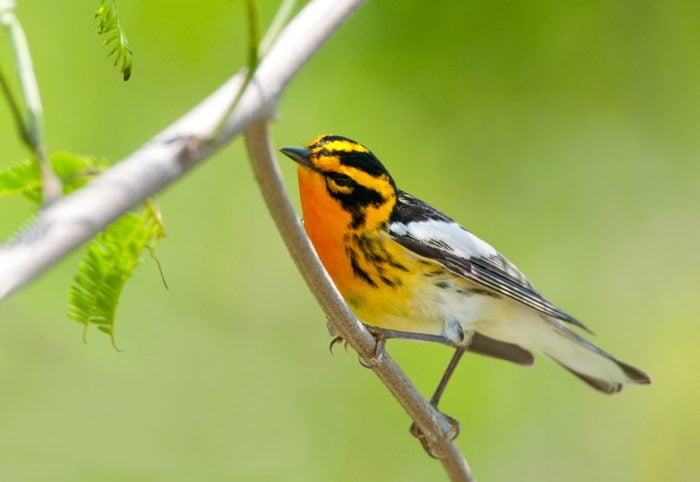
Blackburnian Warbler Identification
If you’ve ever seen a Blackburnian warbler during spring or fall migration, you’ll never forget it. While it can be tricky to spot warblers because of their fast-moving nature and their tendency to stay up high in the trees, the Blackburnian’s fiery orange throat—a coloration that also extends to the face—is an instant giveaway. The rest of the body is black and white, with the wings and back mostly black with white bars, and the breast mostly white with black streaks.
Female Blackburnian warblers (or immature males) look similar to males, but their coloring is muted. While the male is brilliant orange and black, the female’s color patterning is yellow and grayish. Yellow extends through the breast.
“Blackburnians are notable and outstanding for their color; the male in particular is intense and dazzling,” Bill Rowe, president of the St. Louis Audubon Society, says. “Orange and black, and orange on the throat and the breast. The female has the same pattern, but the coloration is yellow and dark brown or gray, rather than orange and black.”
Check out more types of warbler birds you should know.
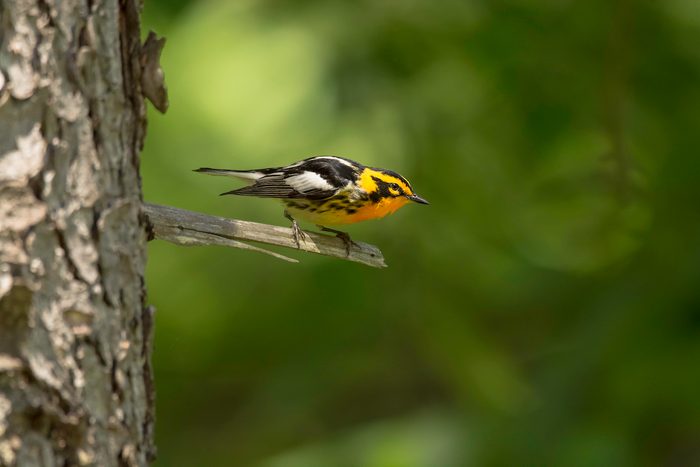
Range and Habitat
To spot a Blackburnian warbler in the United States, you’ll have to head to the eastern half of the country. These tiny birds take on an incredible journey during migration season, when they travel from South America through Mexico and the Midwestern U.S. They spend breeding season in Canada and the Northeast. For most of the United States, they’re most commonly spotted in late April through most of May—a window of six to seven weeks, according to Bill.
“The Blackburnians are part of a cohort of warblers that primarily live up in the boreal forest,” Bill says. “They breed up there during a relatively short summer—that’s an area where summer arrives rather abruptly in June and is over by August, so they are taking off again. They go way far south mostly to the northern parts of South America for winter.”
As is the case with most warblers, to find a Blackburnian, you’ll need to look up. Males sing from the tops of tall spruce and pine trees. “They are, by nature, treetop warblers,” Bill says. “You might get lucky and have one dropping down on a branch in front of you, but often, you’ll have to do the searching by craning your neck. They do most of their feeding in the upper portion of the trees, and they follow that pattern as they’re migrating, too.”
Meet the colorful Canada warbler.
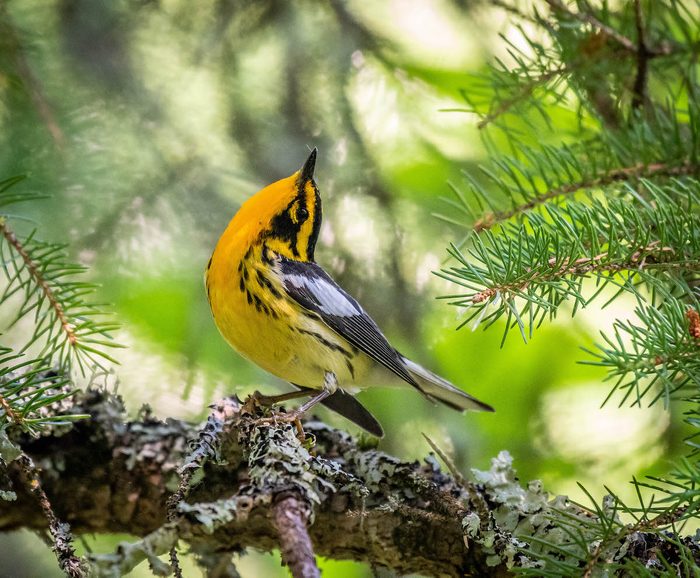
Diet: What Do Blackburnian Warblers Eat?
Warblers generally aren’t feeder birds, and the Blackburnian is no exception. With that said, if you have an abundance of bugs in your backyard, you might be in luck. They dine on caterpillars, spiders, flies, beetles and other insects, although they’ll also eat berries if they need to.
“Their diet is mostly larvae of moths and butterflies, along with other small insects,” Bill explains. “Insects emerge in late spring, and this numerous group of warblers has evolved to take advantage of that.”
A bird bath or water feature can bring warblers to your yard, including Blackburnians. “A water feature is a good way to get warblers to come,” Bill explains—but he elaborates to say that it needs to be positioned correctly. “A bird bath that’s plunked out in the middle of the yard a long way from cover, not so much. But if you have a bird bath or a running water feature tucked into a corner underneath some trees or bushes, that is going to attract many birds that don’t come to feeders. That includes lots of different warblers.”
Learn how to identify a yellow-rumped warbler.
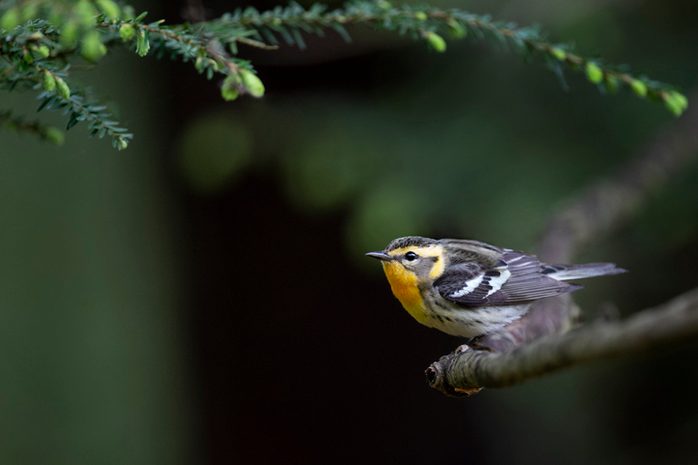
Nesting Habits
You’re not likely to find a Blackburnian warbler nest without some searching—they can be built up to 80 feet off the ground. Female Blackburnians lay three to five eggs, and they have one brood per season; both parents feed the young. Interestingly, Blackburnian warblers have been known to join flocks of black-capped chickadees.
See what a palm warbler looks like.
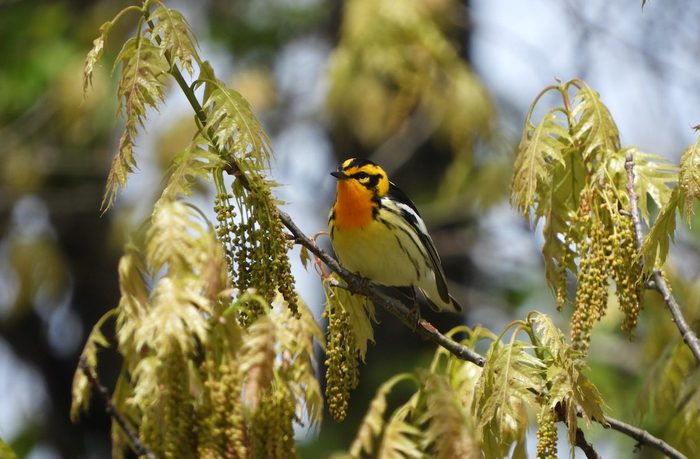
Blackburnian Warbler Song
The Blackburnian warbler’s song consists of a series of tseets that increase in speed, and tee chirps that can fall outside the range of human hearing.
Bird sounds courtesy of the Cornell Lab of Ornithology
About the Expert
Bill Rowe is the president of St. Louis Audubon Society. Throughout his many years of volunteering and serving on the Board, he has written “Bird of the Week” columns, led field trips and private birding tours, and taught birding classes.
